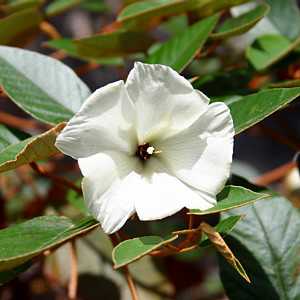
Postcards of St Helena
Old…and older
Judge: Did you or did you not sleep with this woman? Co-respondent: Not a wink, my lord!{f}
⏱ QUICK READ
St Helena has never had a large tourist industry, but it has always had plenty of postcards, spanning back to the 19th Century, all of which are very collectable. Learn about our fascinating range of postcards, old and new, on this page.
The following is a collection of Postcards of St Helena, from various sources. As much information as we have been able to ascertain is provided with each.
If you can help us further identify and/or date any of these postcards, please contact us. You may also be interested in our page Postage Stamps.
Postcards by Subject
Below: Jamestown Napoleon Jacob’s Ladder Sandy Bay Boer PoWs Heart Shaped Waterfall General 2011 Set 1960s Set
Jamestown
Napoleon
Jacob’s Ladder
Sandy Bay
Boer PoWs
Heart Shaped Waterfall
General
2011 Set
Produced by Ed Thorpe and locally printed with Tourist Information Office approval.
1960s Set
Postcard Collectors
As far as we know there are no postcard collectors or groups on St Helena (if you know otherwise please contact us). The Museum of St Helena does sell current postcards; please contact them for details.
We regret that Saint Helena Island Info does not have the resources to help with postcard exchanges.
Read More
Below: Article: Just by Chance Article: Pharmacies, Signs and Postcards
Article: Just by Chance
By Nick Hewes, published in The Independent 24th February 2006
Read, if you will, of a strange tale of the most unlikely coincidence. It concerns a postcard a friend in Yorkshire gave me about a week before my journey to St Helena, in September 2004. He’d gone to an antiques fair one weekend, and had found a postcard of the old RMS St Helena (1990-2018) on one of the stalls. It was dated 1985, and had been sent from Cape Town to an address in Taunton, Somerset. After my friend gave me the card, I used it as a bookmark for a few weeks.

The RMS St Helena (1978-1990) (renamed Avalon)
Then, having made the journey to St Helena on the new RMS, we moved up to Piccolo Hill, and the card was glued to the wall in a desperate attempt to brighten up the place. One day we were visited by the former Captain of the RMS, Bob Wyatt (who we’d got to know during the long voyage from England). Upon seeing the card, he said, that’s my old ship! and promptly took the card off the wall to see who’d written it. It turned out that he actually knew the lady who had sent the card two decades previously. Strangely enough, she had travelled with us for part of the voyage to St Helena, having joined the ship on Ascension Island after flying out from Brize Norton. Sadly, her father had recently passed away, and she was sailing home to attend his funeral.
Now I’m no mathematician, but this does seem to be a crazy coincidence. Firstly, how did a postcard sent from Africa to someone in Taunton in 1985 end up, not being thrown into the bin, but instead transported 300 miles away to East Yorkshire, to be bought by someone browsing on a Saturday afternoon 20 years later? That in itself has long odds against it. What is the probability though, that the lady who sent the card 20 years previously, who has resided in Somerset ever since, would be travelling back home on the same ship as an unknown stranger who was using that very postcard to mark the page of the book he was reading? Another odd fact is that very few visitors to our house on Piccolo Hill would have had the temerity to have taken the card off the wall, as Bob Wyatt did, for the simple reason that he was once the ship’s captain, and therefore had a unique and special interest; in which case, this bizarre sequence of coincidences would have gone unnoticed for ever and ever.
The latest twist, which I discovered two weeks ago (and which lengthens the odds still further), is that my next-door-neighbour is the sister of the lady who sent the card.
If you’d read this kind of thing in a novel by Charles Dickens, you might put it down to the author’s lively poetic imagination. The fact that it really has happened though, proves that truth can occasionally be stranger than fiction.
Article: Pharmacies, Signs and Postcards
By Cliff Masters, published in the St Helena Connection #16, May 2014
My interest in St Helena postcards brought me to the man who published photographs and picture postcards of St Helena from about 1902. Thomas Jackson, Island Chemist was a chemist and general merchant. Prior to Jackson only the photographer A. L. Innes, who had his studio next door to Jackson, had published St Helena postcards.
Thomas Jackson was born in 1843 in the small village of Walkerfield, Co Durham. Having studied at Durham University and graduated as a pharmacist in around 1863, he emigrated to St Helena. Being a young man he was unlikely to have had enough money to buy a chemist shop, so we can assume he was employed by the family who owned the ‘Pharmacy’ at Burton’s House. This was opposite the Officers’ Quarters (now the Post Office) where the Colonial Surgery was located and next door to Essex House.
Jackson married Mary Ann Stewart in 1868 and they had a son Thomas Kipling, Kipling being Thomas’ mother’s maiden name. He must have had high hopes for his boy to take over the business from him. He married in 1891 and lived in Putney working as a chemist’s assistant but died relatively young in 1913, five years before his father. Thomas Kipling’s mother Mary Ann also died young in 1887. Thomas Jackson married his second wife, Emily Louise Warren, in 1889. She was a school teacher on the island and in 1889 had come to the end of her three year contract as head of Jamestown girls’ school.
How long Jackson stayed in employment at the Pharmacy is not clear but by 1883 he had opened his own shop, included by Benjamin Grant in his Descriptive Guide. While running his description up the shops of the south side of Main Street Grant wrote the Polytechnic Warehouse, Mr Jackson’s showy dispensary and drapery shop, the commodious Officers’ Town Mess House, the fine shop called ‘The Star’ and a neat little shop to the left of which are the Lower Bazaar, Mr. M George’s Dispensary, in front of which are three peepul trees, under whose grateful shade auction sales are held, and a roofless building called the Cannister.
Mathew George was St Helena’s first pharmacist. He was known as the ‘doctor’ and was married to Louise George whose death was noted in an article in the August 1958 edition of the Wirebird It is with many regrets that the whole island will know the passing away of Mrs Louisa George at the ripe old age of 90 [᠁] she was born in the 1860s and [᠁] married Mr Mathew George and together they ran the chemist shop. Her husband died many years ago, but the shop still stands with its old time furnishing - drawers and bottles, with their once contents painted in Latin in gold lettering.
At some point ‘doctor’ George moved his business down the street to the Pharmacy and we can only assume that the fine sign and bottles, shown in the pictures, which can only be found in fine chemist shops in England, must have come with George from England. I first saw the chemist bottles in Eva Benjamin’s shop in 1970 and wondered why they were there when I found out that the shop had never been a chemist. Some 44 years later in 2004 I discovered Eva was a ‘George’ and to my delight in 2008 I discovered that the George family still lived in Burton House although now it is known to all as ‘The Georges’.
When exactly it became a residential property is not clear but it has been well preserved. The only change seems to be that the shop window has been taken out and a door fitted. Also in 2008 I found those same bottles at Jamestown’s museum.
The ornate ‘Pharmacy’ sign has an interesting history. In 1902 the Innes’ left the island and E.J. Warren took over their shop. As the picture below shows he removed the sign from ‘the Georges’ and placed it over his new pharmacy business.
E.L. ‘Pop’ Warren came to St Helena when his sister Emily Louise married Thomas Jackson, Island Chemist in 1889 and he was sixteen years old. It is believed he stayed to help his brother-in-law in the shop. Edwin James Warren was born in Paignton at the old school house in Jan 1874. He seems to have returned to England and took up lodgings in London and worked at a chemists. He spent Christmas 1900 on St Helena but was back in London lodgings for the 1901 census. It seems he bought the shop in 1903 and the photographic plates and equipment started to be used by Jackson around this time. After Jackson died in 1918 the shop was sold and his plates began to be used by Warren although the postcards were printed in England. Since then the shop has changed hands many times but it is still known as Warrens.
In the early 1960s Warren retired and went back to England. The new owner, believed to be his nephew, modernised the store and took down the sign as he was not a pharmacist. The sign was then re-painted and taken to Hutts Gate. By 2008 the store building was approaching dereliction and the sign was removed to the Longwood House museum.
As far as St Helena’s postcards are concerned it now seems relatively certain that the island’s first publisher, A.L. Innes, was active from the late 1800s{11} to 1902. His plates were then taken over by Thomas Jackson who produced cards from 1903 to 1913. From about 1914 cards were published by the ‘Pharmacy’ by E.L. ‘Pop’ Warren. From 1960 cards were published by the ‘Polytechnic’ by E.L. Warren’s nephew whose name is not clear. This succession shows that from about 1897 to 1980 postcards were published from this same premises and next door Jackson’s store - well over 80 years. C&M stores, who took over the premises in the 1980s, never published postcards but in the 1990s it was still possible to purchase odd cards at the shop which had been printed many decades earlier.
Our Comment: Since this article was published Hutts Gate Store has been restored as a private house. More on our page Saved Buildings.
Credits:
{a} St Helena, Ascension and Tristan da Cunha Philatelic Society (‘SHATPS’){b} Jarrold and Sons, Norwich{c} George P Reynolds{d} St Helena Art & Crafts{e} Ed Thorpe{f} Text on a postcard by Donald McGill
Footnotes:
{1} Based on the vehicles, plus no spire on St. James’ Church.{2} We don’t understand what this image is intended to portray. It seems to be an attempt to present the man as a quiet, fatherly figure - much at odds with his actual activities.{3} Central image is the arrival of the La Belle-Poule to collect Napoleon’s body.{4} Also shows the Napoleonic Sites, making it a sort-of Exiles map.{5} Note the Flax spread out to dry (bottom right).{6} The desalination plant operated in the early 1900s.{7} St. Matthew’s was rebuilt to its current form during World War 1; this shows the older version.{8} Based on the vehicles.{9} Sorry, we can’t read the words either.{10} The original postcard seems to have been printed at this odd angle. Strange!{11} Sources differ, ranging from 1889 to 1897.

